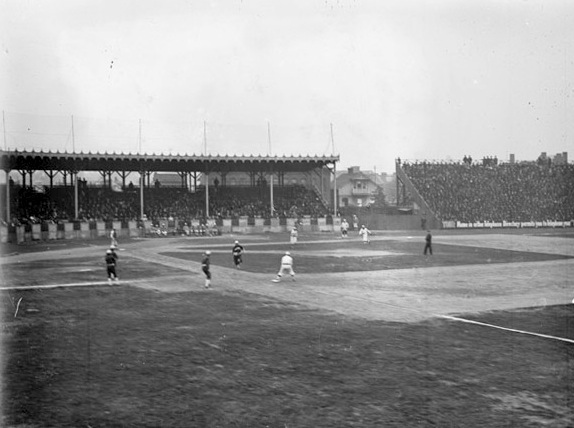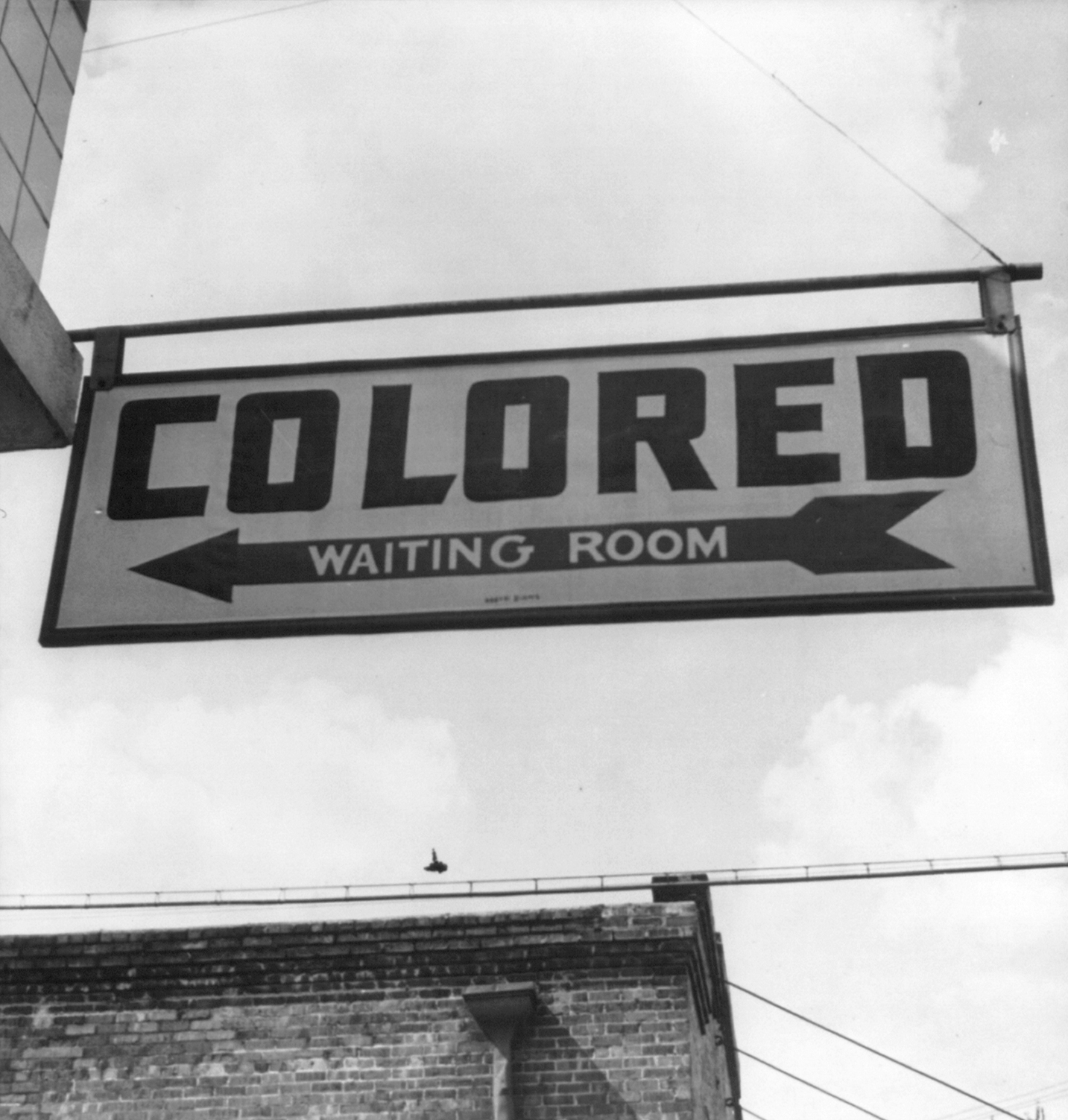|
JeffVanderLou
JeffVanderLou (JVL) is a neighborhood of St. Louis, Missouri. The neighborhood is situated between North Vandeventer Avenue on the northwest, Natural Bridge Avenue on the northeast, North Jefferson Avenue on the East, Delmar Boulevard on the south, and North Compton Avenue and Martin Luther King Drive on the Southwest. In a time of racial segregation following the end of slavery, JeffVanderLou was originally designated as the city's "Negro District" and was one of the only places where African Americans were allowed to own land. It is also where Sportsman's Park (later known as Busch Stadium I) stood from 1902 until 1966. Demographics In 2020 JeffVanderLou's racial makeup was 92.3% Black, 2.9% White, 0.5% Native American, 0.2% Asian, 3.6% Two or More Races, and 0.5% Some Other Race. 1.5% of the population was of Hispanic or Latino origin. See also *Grand Boulevard (St. Louis) Grand Boulevard is a major, seven to five-lane wide, north-south thoroughfare that runs through th ... [...More Info...] [...Related Items...] OR: [Wikipedia] [Google] [Baidu] |
Neighborhoods Of St
A neighbourhood (British English, Irish English, Australian English and Canadian English) or neighborhood (American English; see spelling differences) is a geographically localised community within a larger city, town, suburb or rural area, sometimes consisting of a single street and the buildings lining it. Neighbourhoods are often social communities with considerable face-to-face interaction among members. Researchers have not agreed on an exact definition, but the following may serve as a starting point: "Neighbourhood is generally defined spatially as a specific geographic area and functionally as a set of social networks. Neighbourhoods, then, are the spatial units in which face-to-face social interactions occur—the personal settings and situations where residents seek to realise common values, socialise youth, and maintain effective social control." Preindustrial cities In the words of the urban scholar Lewis Mumford, "Neighbourhoods, in some annoying, inchoate fashi ... [...More Info...] [...Related Items...] OR: [Wikipedia] [Google] [Baidu] |
Jefferson Avenue (St
Jefferson Avenue may refer to: * Jefferson Avenue (Detroit), Michigan * Jefferson Avenue (St. Louis) Jefferson Avenue is a major, seven lane wide, north to south thoroughfare in the city of St. Louis, Missouri. For much of its run in south city Jefferson Avenue and Grand Boulevard take a parallel course, separated by about sixteen blocks. In t ..., Missouri * Jefferson Avenue (Staten Island Railway station), New York See also * Jefferson Avenue Historic District (other) {{geodis ... [...More Info...] [...Related Items...] OR: [Wikipedia] [Google] [Baidu] |
Grand Boulevard (St
{{disambiguation, road ...
Grand Boulevard may refer to: *Grand Boulevard (Budapest), Hungary * Grand Boulevard, Joondalup, Australia * Grand Boulevard (Montreal), Canada United States * Grand Boulevard (Corona), California, a circular street that encircles downtown Corona *Grand Boulevard, Chicago, Illinois, a neighborhood *Grand Boulevard (Detroit), Michigan, a boulevard that encircles central Detroit * Grand Boulevard (Kansas City, Missouri) *Grand Boulevard, Long Beach, New York *Grand Boulevard (St. Louis), Missouri * Grand Boulevard (Oklahoma City), Oklahoma *Southern Parkway (Louisville, Kentucky), formerly called Grand Boulevard See also * Grand Avenue (other) *Grand Street (other) Grand Street may refer to: * Grand Street (magazine), an American magazine * Grand Street (film), a 2013 film starring Kelly McGillis New York City Streets * Grand Street (Manhattan), a street in New York City * Grand Street (Brooklyn), a street i ... [...More Info...] [...Related Items...] OR: [Wikipedia] [Google] [Baidu] |
Sportsman's Park
Sportsman's Park was the name of several former Major League Baseball ballpark structures in St. Louis, Missouri. All but one of these were located on the same piece of land, at the northwest corner of Grand Boulevard and Dodier Street, on the north side of the city. History Sportsman's Park was the home field of both the St. Louis Browns of the American League, and the St. Louis Cardinals of the National League from 1920 to 1953, when the Browns relocated to Baltimore and were rebranded as the Orioles. The physical street address was 2911 North Grand Boulevard. The ballpark (by then known as Busch Stadium, but still commonly called Sportsman's Park) was also the home to professional football: in , it hosted St. Louis' first NFL team, the All-Stars, and later hosted the St. Louis Cardinals of the National Football League from 1960 (following the team's relocation from Chicago) until 1965, with Busch Memorial Stadium opening its doors in 1966. 1881 structure Baseball was pla ... [...More Info...] [...Related Items...] OR: [Wikipedia] [Google] [Baidu] |
African Americans
African Americans (also referred to as Black Americans and Afro-Americans) are an ethnic group consisting of Americans with partial or total ancestry from sub-Saharan Africa. The term "African American" generally denotes descendants of enslaved Africans who are from the United States. While some Black immigrants or their children may also come to identify as African-American, the majority of first generation immigrants do not, preferring to identify with their nation of origin. African Americans constitute the second largest racial group in the U.S. after White Americans, as well as the third largest ethnic group after Hispanic and Latino Americans. Most African Americans are descendants of enslaved people within the boundaries of the present United States. On average, African Americans are of West/ Central African with some European descent; some also have Native American and other ancestry. According to U.S. Census Bureau data, African immigrants generally do not se ... [...More Info...] [...Related Items...] OR: [Wikipedia] [Google] [Baidu] |
Negro
In the English language, ''negro'' is a term historically used to denote persons considered to be of Black African heritage. The word ''negro'' means the color black in both Spanish and in Portuguese, where English took it from. The term can be construed as offensive, inoffensive, or completely neutral, largely depending on the region or country where it is used, as well as the context in which it is applied. It has various equivalents in other languages of Europe. In English Around 1442, the Portuguese first arrived in Southern Africa while trying to find a sea route to India. The term ', literally meaning "black", was used by the Spanish and Portuguese as a simple description to refer to the Bantu peoples that they encountered. ''Negro'' denotes "black" in Spanish and Portuguese, derived from the Latin word ''niger'', meaning ''black'', which itself is probably from a Proto-Indo-European root ''*nekw-'', "to be dark", akin to ''*nokw-'', "night". ''Negro'' was also used of ... [...More Info...] [...Related Items...] OR: [Wikipedia] [Google] [Baidu] |
Slavery
Slavery and enslavement are both the state and the condition of being a slave—someone forbidden to quit one's service for an enslaver, and who is treated by the enslaver as property. Slavery typically involves slaves being made to perform some form of work while also having their location or residence dictated by the enslaver. Many historical cases of enslavement occurred as a result of breaking the law, becoming indebted, or suffering a military defeat; other forms of slavery were instituted along demographic lines such as race. Slaves may be kept in bondage for life or for a fixed period of time, after which they would be granted freedom. Although slavery is usually involuntary and involves coercion, there are also cases where people voluntarily enter into slavery to pay a debt or earn money due to poverty. In the course of human history, slavery was a typical feature of civilization, and was legal in most societies, but it is now outlawed in most countries of the w ... [...More Info...] [...Related Items...] OR: [Wikipedia] [Google] [Baidu] |
Racial Segregation In The United States
In the United States, racial segregation is the systematic separation of facilities and services such as Housing in the United States, housing, Healthcare in the United States, healthcare, Education in the United States, education, Employment in the United States, employment, and transportation in the United States, transportation on Race in the United States, racial grounds. The term is mainly used in reference to the legally or socially enforced separation of African Americans from White people, whites, but it is also used in reference to the separation of other ethnic minorities from majority and mainstream communities. While mainly referring to the physical separation and provision of separate facilities, it can also refer to other manifestations such as prohibitions against interracial marriage (enforced with anti-miscegenation laws), and the separation of roles within an institution. Notably, in the Military of the United States, United States Armed Forces up until Executive ... [...More Info...] [...Related Items...] OR: [Wikipedia] [Google] [Baidu] |
List Of Neighborhoods Of St
A ''list'' is any set of items in a row. List or lists may also refer to: People * List (surname) Organizations * List College, an undergraduate division of the Jewish Theological Seminary of America * SC Germania List, German rugby union club Other uses * Angle of list, the leaning to either port or starboard of a ship * List (information), an ordered collection of pieces of information ** List (abstract data type), a method to organize data in computer science * List on Sylt, previously called List, the northernmost village in Germany, on the island of Sylt * ''List'', an alternative term for ''roll'' in flight dynamics * To ''list'' a building, etc., in the UK it means to designate it a listed building that may not be altered without permission * Lists (jousting), the barriers used to designate the tournament area where medieval knights jousted * ''The Book of Lists'', an American series of books with unusual lists See also * The List (other) * Listing (di ... [...More Info...] [...Related Items...] OR: [Wikipedia] [Google] [Baidu] |
List Of Sovereign States
The following is a list providing an overview of sovereign states around the world with information on their status and recognition of their sovereignty. The 206 listed states can be divided into three categories based on membership within the United Nations System: 193 UN member states, 2 UN General Assembly non-member observer states, and 11 other states. The ''sovereignty dispute'' column indicates states having undisputed sovereignty (188 states, of which there are 187 UN member states and 1 UN General Assembly non-member observer state), states having disputed sovereignty (16 states, of which there are 6 UN member states, 1 UN General Assembly non-member observer state, and 9 de facto states), and states having a special political status (2 states, both in free association with New Zealand). Compiling a list such as this can be a complicated and controversial process, as there is no definition that is binding on all the members of the community of nations concerni ... [...More Info...] [...Related Items...] OR: [Wikipedia] [Google] [Baidu] |
North American Numbering Plan
The North American Numbering Plan (NANP) is a telephone numbering plan for twenty-five regions in twenty countries, primarily in North America and the Caribbean. This group is historically known as World Zone 1 and has the international calling code ''1''. Some North American countries, most notably Mexico, do not participate in the NANP. The NANP was originally devised in the 1940s by the American Telephone and Telegraph Company (AT&T) for the Bell System and the independent telephone operators in North America. The goal was to unify the diverse local numbering plans that had been established in the preceding decades and prepare the continent for direct-dialing of calls by customers without the involvement of telephone operators. AT&T continued to administer the numbering plan until the breakup of the Bell System, when administration was delegated to the North American Numbering Plan Administrator (NANPA), a service that has been procured from the private sector by the Fede ... [...More Info...] [...Related Items...] OR: [Wikipedia] [Google] [Baidu] |





